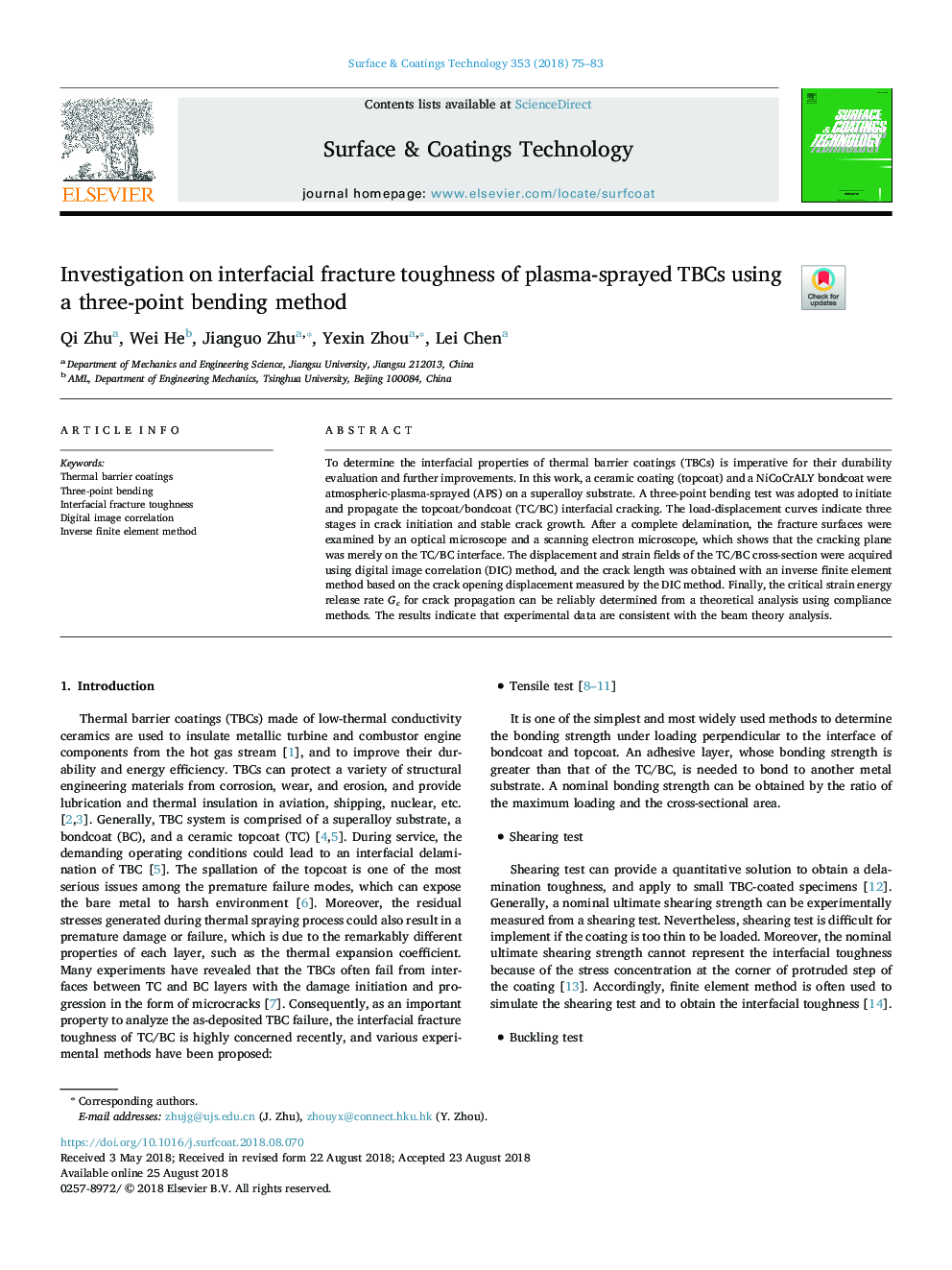| Article ID | Journal | Published Year | Pages | File Type |
|---|---|---|---|---|
| 8955674 | Surface and Coatings Technology | 2018 | 9 Pages |
Abstract
To determine the interfacial properties of thermal barrier coatings (TBCs) is imperative for their durability evaluation and further improvements. In this work, a ceramic coating (topcoat) and a NiCoCrALY bondcoat were atmospheric-plasma-sprayed (APS) on a superalloy substrate. A three-point bending test was adopted to initiate and propagate the topcoat/bondcoat (TC/BC) interfacial cracking. The load-displacement curves indicate three stages in crack initiation and stable crack growth. After a complete delamination, the fracture surfaces were examined by an optical microscope and a scanning electron microscope, which shows that the cracking plane was merely on the TC/BC interface. The displacement and strain fields of the TC/BC cross-section were acquired using digital image correlation (DIC) method, and the crack length was obtained with an inverse finite element method based on the crack opening displacement measured by the DIC method. Finally, the critical strain energy release rate Gc for crack propagation can be reliably determined from a theoretical analysis using compliance methods. The results indicate that experimental data are consistent with the beam theory analysis.
Keywords
Related Topics
Physical Sciences and Engineering
Materials Science
Nanotechnology
Authors
Qi Zhu, Wei He, Jianguo Zhu, Yexin Zhou, Lei Chen,
